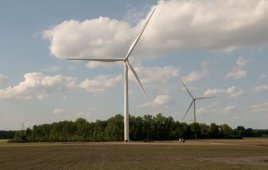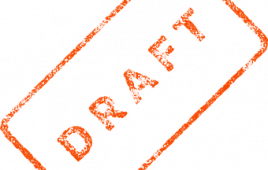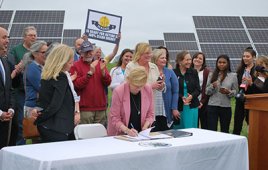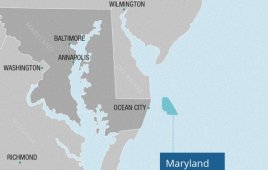This article comes from New Energy Update and is authored by Richard Wachman.
Coordinated turbine tilt (yawing) and ramp-down strategies based on advanced data analytics could increase annual energy production by several percentage points, say the initial findings from a joint government-industry research project.
As operators seek to raise the competitiveness of existing and new wind farm assets, wake steering strategies are being developed to minimize total plant losses. Developers are installing larger turbines to lower output costs and upstream turbines can significantly impact wind levels available to downstream units.
Wind farms can lose up to 20% of their gross energy production from the wake created by upstream turbines, according to the National Renewable Energy Laboratory.
Turbine wind wake at initial speed of 6m/s
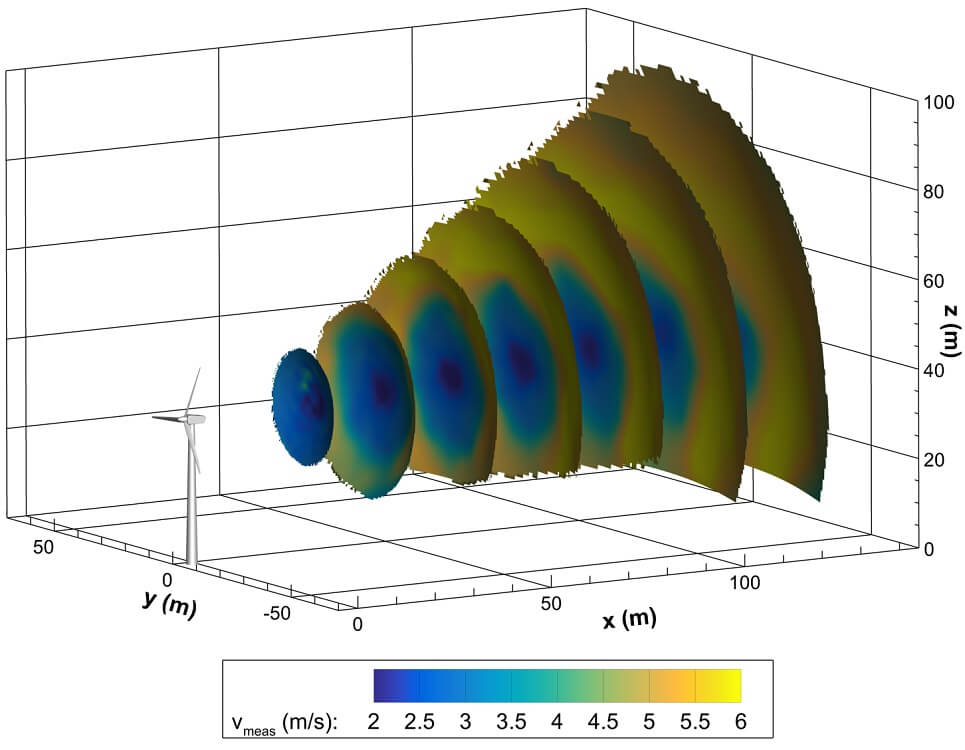
Researchers are developing coordinated tilting (yawing) and ramp-down systems to raise wind plant outputs. (Image: Mimadeo) Source: NREL, Sandia National Laboratories (2016).
In a joint research project, NREL, NextEra Energy, and venture capital firm Ystrategies are currently testing one control strategies for the yaw systems which orientate turbine rotors towards the wind. Coordinated tilting (yawing) of upstream turbines can help steer wind wakes towards downstream units and tactical output reductions can boost overall plant performance. Project partner NextEra operates more than 12 GW of wind capacity globally, providing the project with significant data resources.
The research project, launched earlier this year, represents the first commercial tests of NREL-developed modeling and optimization software. NREL’s Wind-Plant Integrated System Design & Engineering Model (WISDEM) provides top down wind farm performance alongside individual turbine monitoring. Tests are being performed at the Peetz Table Wind Energy Center (PTWEC) in Colorado.
Initial findings of the project show coordinated ‘yaw-offset-induced steering’ can increase annual energy production (AEP) for an entire wind plant by a “few percentage points,” Katherine Dykes, wake steering project manager at NREL, told New Energy Update.
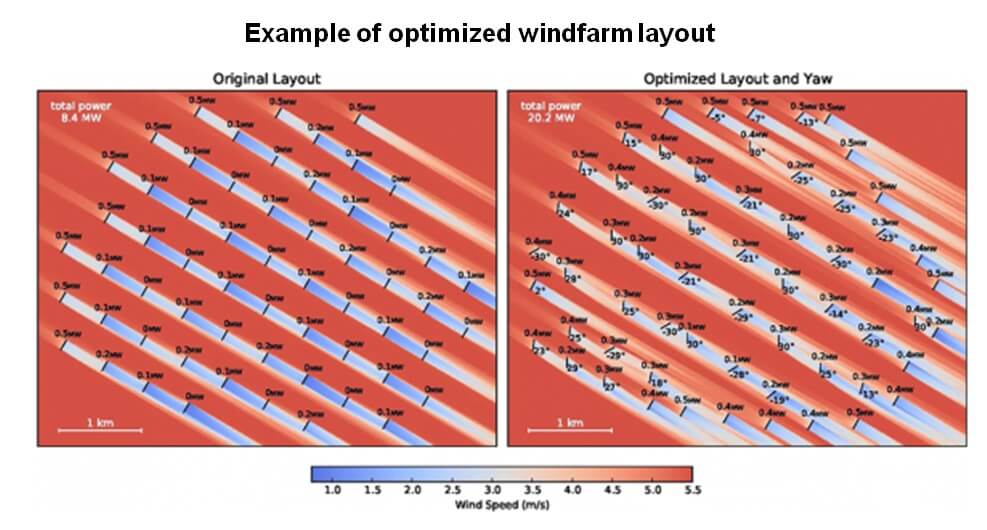
Spacing turbines to accommodate wake steering produces unusual layouts but more power-producing wind farms.
“Depending on the wind direction, our simulations predict the power performance improvement could be 10% or more. We intend to validate the simulation results in the field in collaboration with NextEra through a field-test demonstration at one of their U.S. wind plants,” she said.
An AEP increase of a few percentage points would have a significant impact on investor returns, Jim Kiles, CEO of Ystrategies, said. “When you can increase by single digit percentages, those numbers become extremely meaningful as farms become larger by installing more powerful turbines,” Kiles noted.
A 1% output increase from a turbine with a tip height of 200 meters might equate to the entire output from a 15-m placement, he said.
Data power
The wake-steering research will help create an efficient communication system which integrates data analytics into the hardware of existing and new build wind farm assets.
Advances in data analytics, high-fidelity modeling, and measuring techniques have been “key enablers” of new wake steering strategies, Dykes said. The NREL-led project will initially look to demonstrate performance improvements from using yaw-offset-induced steering on groups of two or three turbines, she said.
For the rest of the article, pick here: https://goo.gl/pJBWhQ
Filed Under: Uncategorized

